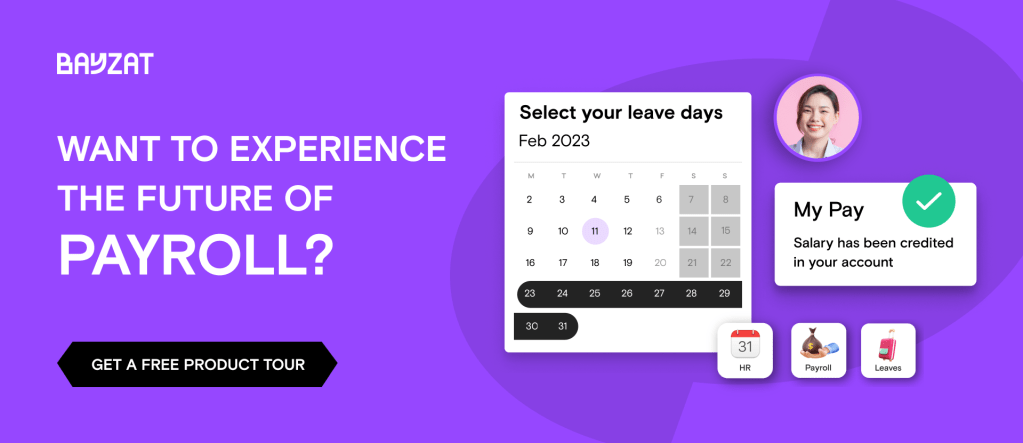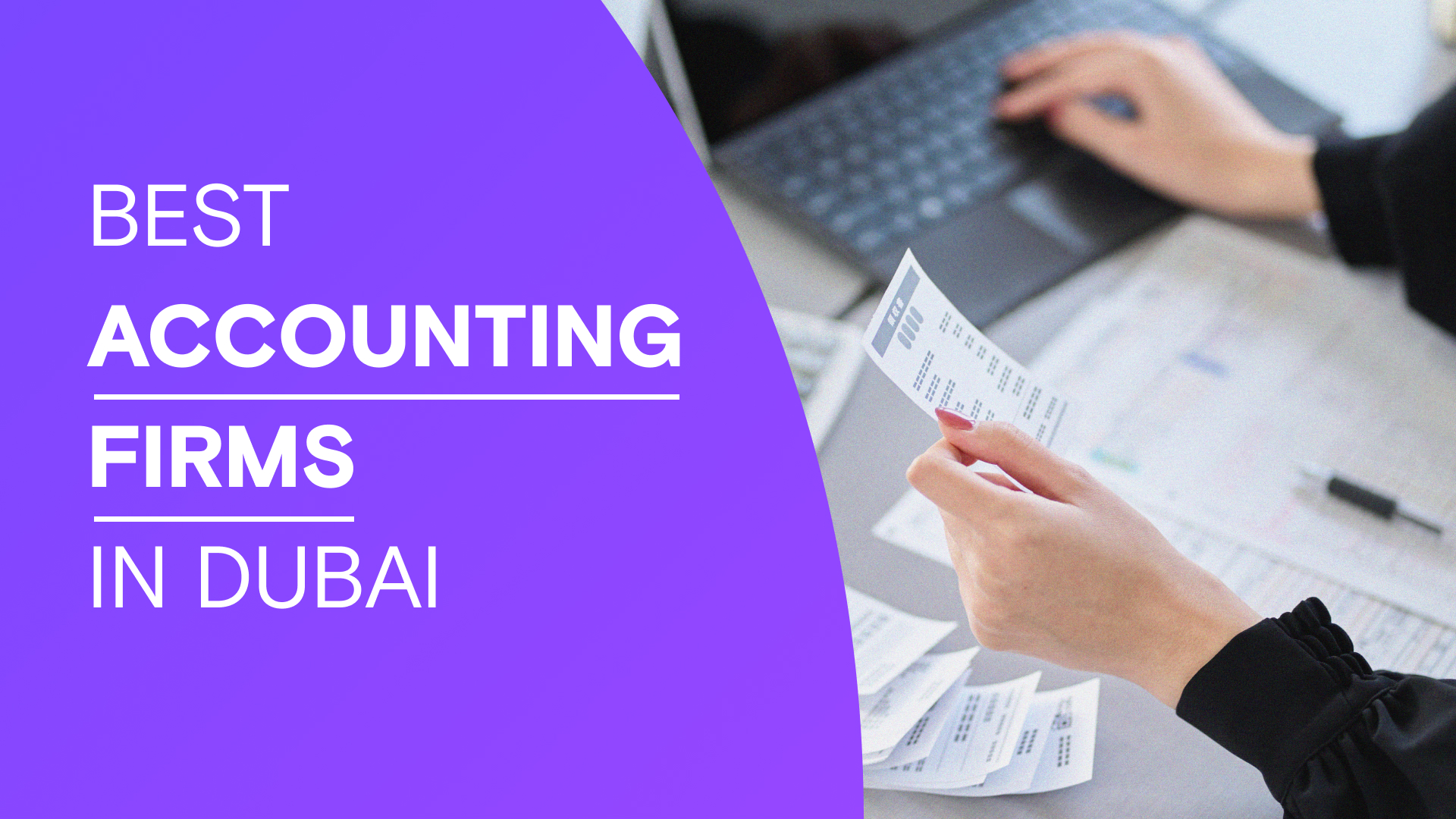Businesses of all sizes will have to deal with paying salaries to their employees. Manual calculations, managing spreadsheets, and entering payment information can be time-consuming, result in errors and leave your employees with a sour taste. That’s why, in 2022-2023, many companies opt to use payroll processing software to do the job. This payroll guide gives you a brief overview of payroll software, its functionalities, and benefits, together with tips on how to choose the right payroll management software for your business in UAE.
What is Payroll?
Payroll is the systematic and organized process of managing employee compensation, which includes calculating wages, deducting taxes and other withholdings, and ensuring timely and accurate payment to employees for their work within an organization. All companies have a process for paying their employees each month.
A person usually working in the finance department of an organization calculates the wages for the entire workforce, records it in the file, then sends it for approval before finally arranging for the amount to be paid into each employee’s bank account or via check. Payroll involves performing various tasks to ensure accurate and timely pay-checks and record-keeping compliance. Payroll is a very important topic for all SMEs because it is the most time-consuming process and it follows strict regulatory requirements for on-shore companies in the UAE.
What is the purpose of payroll?
Your employees are your greatest asset. You get their talent and skills, in exchange for paying them a salary for the work they do. Payroll refers to several activities leading to employees getting paid. In short, payroll helps to:
- Pay the employee the correct amount of money
- Pay the employee on the correct date
- Track employee work hours paid leave, and other events that might change the salary information, including public holidays
Payroll can have the potential to do other things as well. One common feature around the world is to use payroll to pay relevant taxes. Employers can account for the tax at the time of payment, making it easier for the employees. However, in payroll software in the UAE, this isn’t something you have to think about. In Dubai and elsewhere, employers are regulated by the UAE Labour Law which means they are not obliged to pay corporate income tax.
Other employment rules and regulations at work in the UAE can be reflected in payroll. For example, there are specific rules regarding how employees are paid if they are on sick leave.
What is Wages Protection System (WPS)?
The Wages Protection System (WPS) is an electronic salary system that permits companies to pay their employee’s wages through banks, bureaux de change and financial institutions authorized and approved by the Central Bank of UAE. By developing this system, the ministry of labor creates a database that records wage payments in the private sector to overlook and guarantee the timely and full payment of agreed-upon wages. This is also an innovative solution for employers to save time and minimize efforts to pay workers’ wages.
Here are some key points to note about the WPS in the UAE
- The company must have a bank account with one of the authorized banks operating in the UAE.
- All onshore companies plus Jebil Ali Free Zone must comply.
- The company should enter into a contract with their bank or financial institution that is authorized by the central government.
- Employee salaries must be paid via WPS within two weeks of their due date.
- Employee salaries should not be less than what is stated in their labor contracts.
- A salary file (.SIF) needs to be sent by companies to their respective banks in order to distribute salaries to employees. A SIF file includes the salary information of all employees.
Learn More about All about Salary Information File SIF
If a company fails to enroll in the WPS or does not transfer employee wages on time, new work permits will be denied until all outstanding payments have been settled. The ministry of labor might also impose heavy fines on the employer which go up to AED 50,000.
What does the payroll processing cycle look like?
Payroll processing from start to finish involves a number of steps. The cycle looks like this:
- Creating the organizational pay policy which includes things like hourly pay, other pay benefits, leave policies, and so on.
- Identifying the different payslip components.
- Gathering all payroll inputs which include self-reporting and other employee data tracking systems.
- Calculating the gross salary, other non-statutory deductions, and the net pay.
- Releasing the correct pay to employees.
- Depositing other dues if required and ensuring compliance with local laws.
In essence, the above can be divided into three major stages of payroll: pre-payroll, actual payroll and post-payroll processes. Each step is as important as the other in ensuring a smooth payroll processing cycle.
Methods used to Process Payroll in the UAE
There are 4 methods to process payroll smoothly in the UAE :
- Bank Wire Transfer: Companies who pay their employees via a bank wire transfer will have to adhere to the exact format provided by the bank. There is a charge to process the payroll for these employees, but the fee is often very low and is dependent upon the bank’s fees.
- Exchange House Wire Transfer: Companies that have a mixture of banked and unbanked employees can process their payroll through exchange houses. The company provides the exchange house the payroll file and pays a per-person fee. Companies also have the option to pay the exchange house to generate the payroll file on their behalf.
- Cash/Cheque: This method is suitable when a company has new residents in UAE who do not have valid documents to open a bank account yet
- Mastercard/Debit cards: This method is used by companies who have employees who do not have access to bank accounts. Most exchange houses have this option for companies to pay a fee to process each month. The employees get their salaries loaded on the Debit Card. Employees are also able to pull money out of these accounts via an ATM machine.
Payroll can be puzzling and implementing a payroll management platform that automates and handles the process can save you valuable time and costs.
What does payroll software do?
It’s possible to manually take care of payroll and this is what organizations had to do before technology took over. Looking after payroll, even in a smaller company, could take a lot of time and effort. On top of the time spent going over payroll information, small mistakes and human errors could occur and result in larger problems.
The above payroll processing cycle showed how many different components are part of the process. Looking after the information and various steps manually is very inefficient. Technology has come to the rescue and most companies use special payroll software to make sure the information is accurate. Payroll software can play a crucial role in automating many of the above steps. For instance, after the initial data input setting, the software can automatically calculate payroll information in seconds. Furthermore, payments can be scheduled and post-reporting made automatic.
Why do businesses need payroll processing systems?
Payroll processing systems can be a major time-saver for organizations of all sizes. The more employees your business has, the more help automated software can provide. However, small companies can also benefit from payroll processing systems because they help with things like compliance. It’s also important to remember that smaller firms might not want to waste precious resources in calculating payroll information. Your finance and HR department could be doing more important things and therefore, small businesses can benefit from payroll software a great deal.
What are the benefits of payroll management software?
But what are the tangible benefits a business can enjoy when it uses payroll software? These are the main benefits your business will notice when it implements a payroll processing system:
- Automation – Payroll software saves a lot of time and reduces the risk of errors due to automation. Calculations, payments and reporting can be automated which speeds the processing of payroll information and limits the possibility of human error.
- Security – Software can boost security, especially when you choose the right software. Physical paper versions of payroll can be a security risk, whilst digital files could ensure more privacy in terms of dealing with employees’ confidential data.
- Accuracy – Payroll software improves the accuracy of calculation, again reducing the risk of mistakes.
- Compliance – Related to accuracy is the boost in compliance. These software solutions tend to follow the latest compliance laws and regulations, making it easier for you to stay on top of intricate details and changes to the labour laws.
- Integration – Payroll software can be linked to other solutions, such as employee calendars. You could even integrate payroll with employee reporting systems which could lead to higher levels of data. This can be used to improve employee productivity and wellbeing.
- Transparency – Software can improve transparency because most payroll software allows employees to directly view and manage their personal information. This can ensure the process of calculating salaries is transparent and this, in turn, can boost employee happiness and trust.
Payroll software has the overall ability to save a lot of time and money with improved efficiency. You can turn the process of payroll processing into a fast and transparent system.

How to choose payroll software?
But like with any technology, payroll software needs to be selected with care. Just adding payroll software solutions to your business is not going to guarantee the above benefits. There are differences in available software. A solution that works for a multibillion company might not be quite as useful for a small business, and vice versa.
When you are looking for payroll software, you have to keep the following steps in mind. You should approach choosing software by first defining what you need from the software. Start by thinking about the different functions you want the software to perform. Your needs are unique and it’s important to understand them before you start looking. You should then go around and compare different payroll software to see which ones meet your unique needs.
Focus on things such as:
- Ease of use. Depending on your business’ IT capabilities, you don’t want the software to create a lot of user problems. Opt for systems that are comprehensive but intuitive with an easy workflow. You also want to pay attention to the level of customer service you’d be getting. The more support available, the easier the software could be to use.
- Scalability. If you’re a small business, you want to pay extra attention to the scalability of the software. Your payroll needs might look very different right now to what they might be in five years, as your business grows.
- Integration. As mentioned, payroll processing systems can integrate with other software. Look into this if you want them to integrate with any specific systems you are already using.
- Security and compliance. Pay attention to security features. You want the software to use the latest encryption and be compliant with local payroll laws. For example, local payroll software in Dubai can guarantee you don’t have to worry about compliance the same way you might with software developed to another market altogether.
You also have to choose your payroll software either as a cloud-based software or an on-premise system. In 2023, the cloud is the king. Cloud-based payroll management systems provide you with the ability to access data at any time and from anywhere. They can make management easier, especially in the current year – consider, for example, how many had to start working from home during the pandemic. The advantage of the cloud also comes in the form of scalability. Scaling a cloud system is a lot easier than having to start upgrading an on-premise system. Furthermore, the security of a cloud-based payroll is that you don’t need to physically worry about it. With on-premise software, you still have to make sure your business has adequate physical security against things like fire, theft and so on.
Payroll Processing with Bayzat: the UAE’s first automated payroll processing solution
Bayzat is changing what’s possible when it comes to payroll processing. Our secure, innovative finance products are built for businesses like yours to save you time and money. At Bayzat, creating world-class automated experience is at our core. And we’re excited to introduce the UAE’s first automated payroll processing software, at no cost. In just a few clicks, you can process payroll for your entire team in UAE.
With payroll processing on Bayzat, you can benefit from our partnership with Al Ansari Exchange and experience a seamless process.
Here are a few key features:
- Send your salary data in just two clicks – no more spreadsheets or WPS files!
- Real-time tracking of salary payment status once the money leaves your account
- Eliminate human error and make your data more reliable
- Accurate, compliant and secure cloud-based technology
- Manage and track monthly changes to your payroll table
- Powerful reporting and analytics: View pay history and download reports for all prior transactions
- Automatically generate payslips for all your employees in a single click
Plus, did you know that your company could be paying anywhere between AED 3 to AED 15 per WPS salary transfer for each employee? Bayzat will take away these costs whilst processing your payroll at no cost for the first year.









Get Social